【Local Bus Terminal】DX through cloud-based bus terminal operation information and advertisement display
In addition to improving operational efficiency, the use of highly flexible display layout capabilities enhances the value of digital advertising.
Niigata Kotsu Co.,Ltd
Interviewee
Chief clerk Mr. Kondo
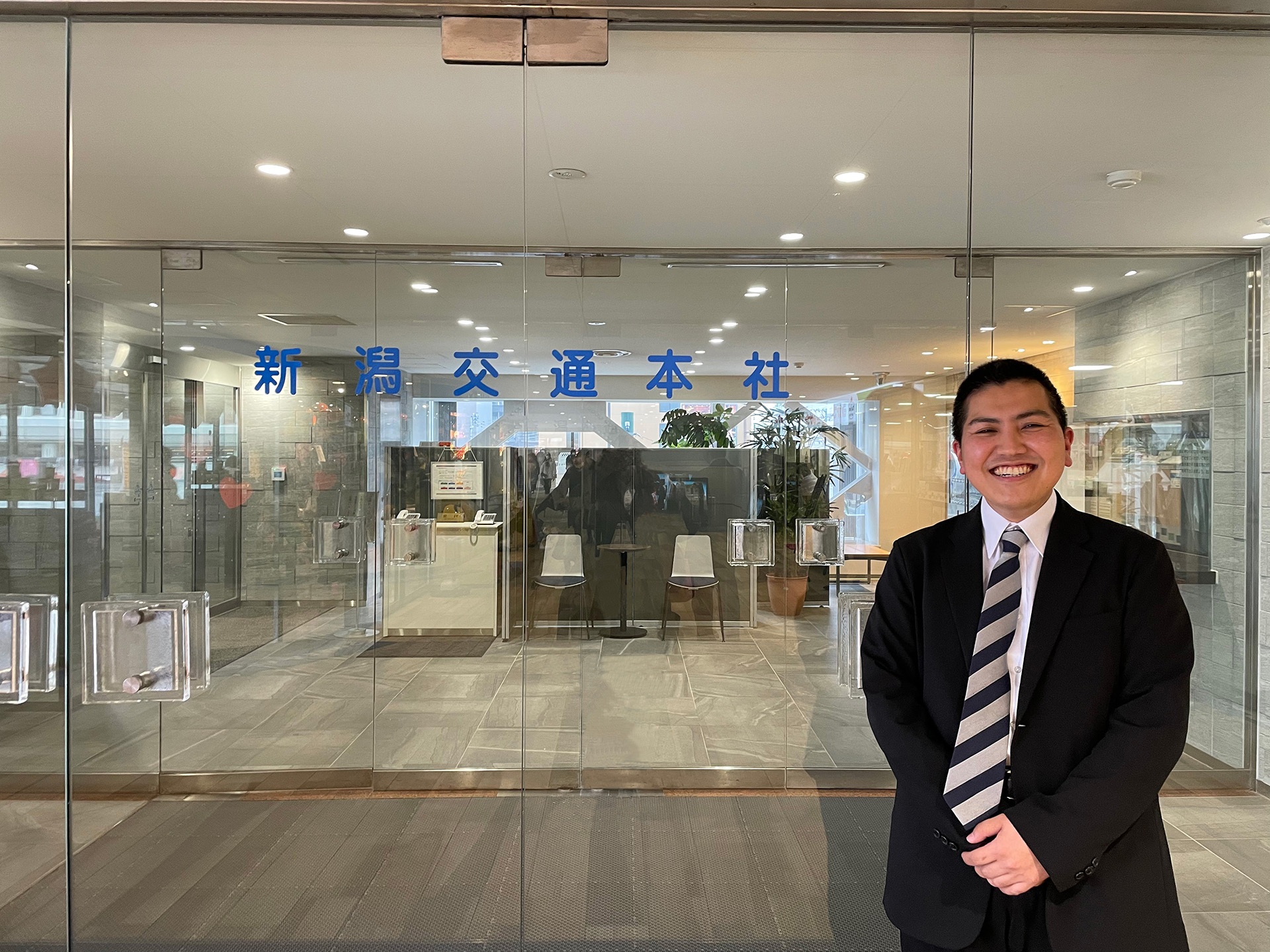
Niigata Kotsu Co.,Ltd displays bus operation information at the bus terminal in the Bandai City Bus Center, where its headquarters are located. Previously, paper timetables were posted, but with the renovation of the bus center, the company installed CMP and is now using digital signage. We spoke with Mr. Kondo about the changes in operations, the response of users of the bus terminal, and the management of advertising as a result of the introduction of CMP.
Issues they wanted to solve
Paper timetable postings were not highly visible, and from an operational aspect, the work of re-papering and printing was time-consuming.
Key points for choosing CMP
The layout was flexible and had all the functions we needed. In addition, there was potential for development into new projects in the future.
Effects after introduction
Digital Transformation (DX) of operations. For users of the bus terminal, it became easier to understand the status of the bus operation. It also increased its value as an advertising medium.
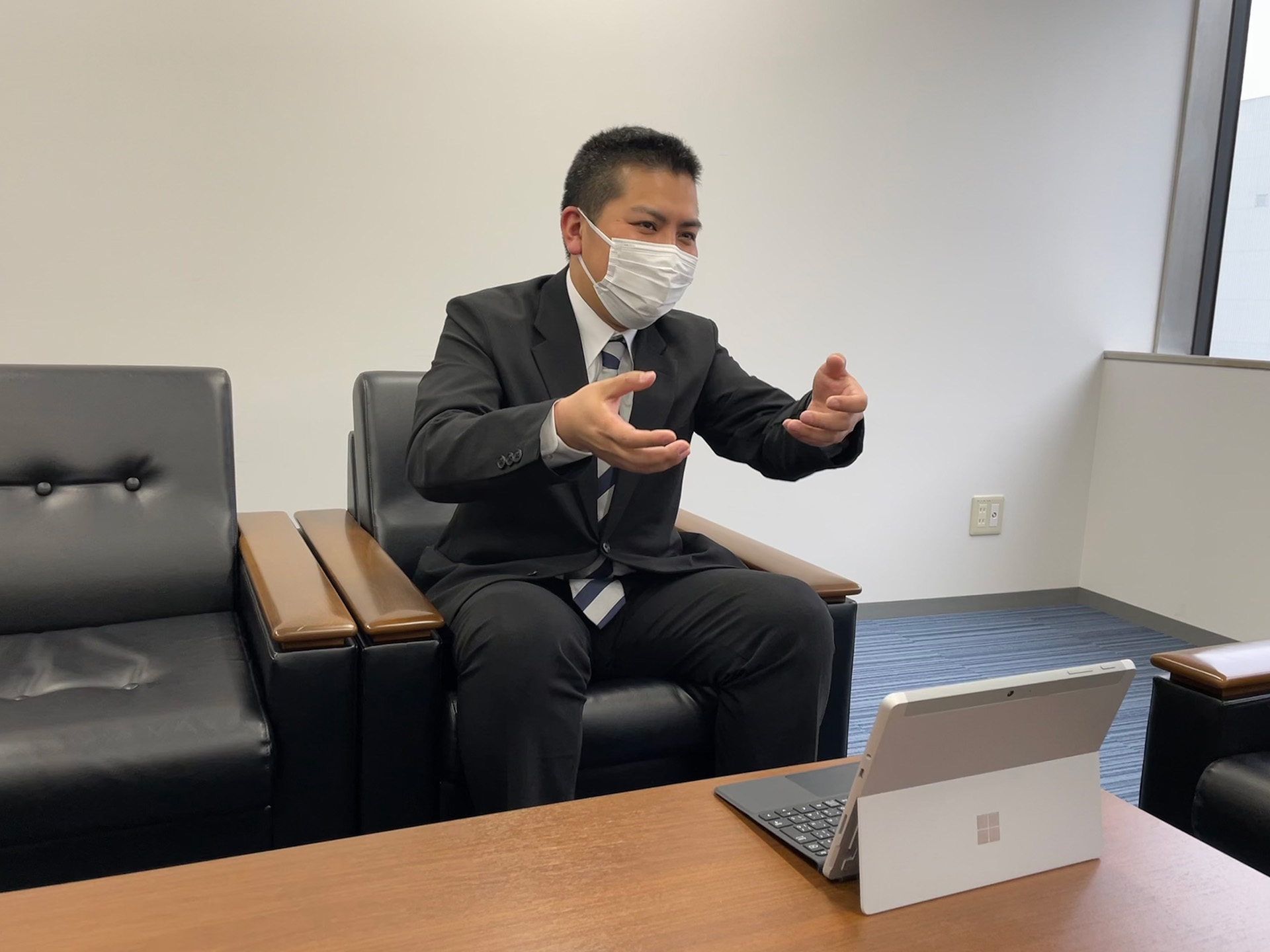
Aiming to create a bright and open space with two key aspects: guidance and advertisement
- What challenges did you face in posting the information before?
Previously, paper timetables for buses were posted, but they were not highly visible to users. The workload was also heavy, requiring the laborious process of replacing the timetables at night for each timetable revision and printing large timetables for bus centers on a dedicated printer.
- Why did you start considering a digital operation guidance system?
The trigger was the decision to renovate the entire bus center following its earthquake-resistant construction. The concept of the renewal was to "create a bright and open space," so we wanted to create a bright space by introducing signage.
Also included in this consideration was the renewal of advertising displays with billboards by a group company, an advertising agency. We were seeking a way to offset the initial and running costs incurred for new equipment and systems through advertising revenues.
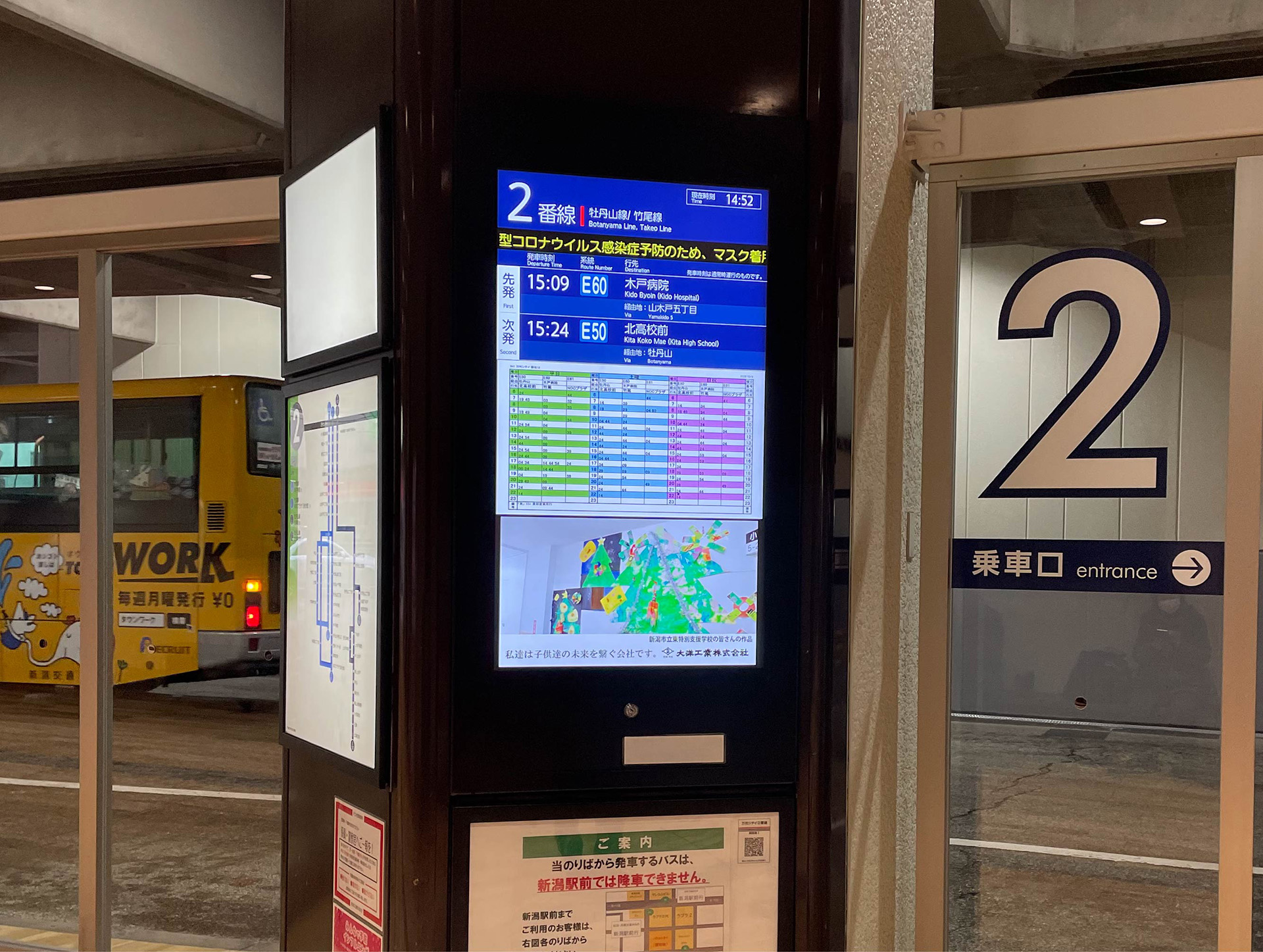
A growing system with all the features we need and the possibility to develop in the future
- Why did you choose CMP?
We considered various signage systems, but the content to be displayed on the signage was basically information related to operation, such as the most recent bus information, announcements, timetables, and service cancellations, and there was not much difference among the companies. Also, the layout was also unchangeable. There was not much flexibility in displaying advertisements, such as only displaying still images.
In contrast, CMP is highly flexible and allows for flexible design changes. It can also display video advertisements. CMP was also the best choice, considering that it can be displayed in a way that fits within the existing posting size, can display both bus information and advertisements, and generates revenue through advertising.
Another key point was the separate authorization function that allows operators to manage only the parts related to operations and advertising companies to manage only the functions related to advertisements. After the decision was made to introduce the system, a "synchronized playback function" was developed to play 10 advertising areas at the same time, creating a three-dimensional space and improving the value of the advertisements.
Another key factor in our decision was the system's ability to be expanded in the future to include linkage with bus proximity information (bus location system), not just the current installation.
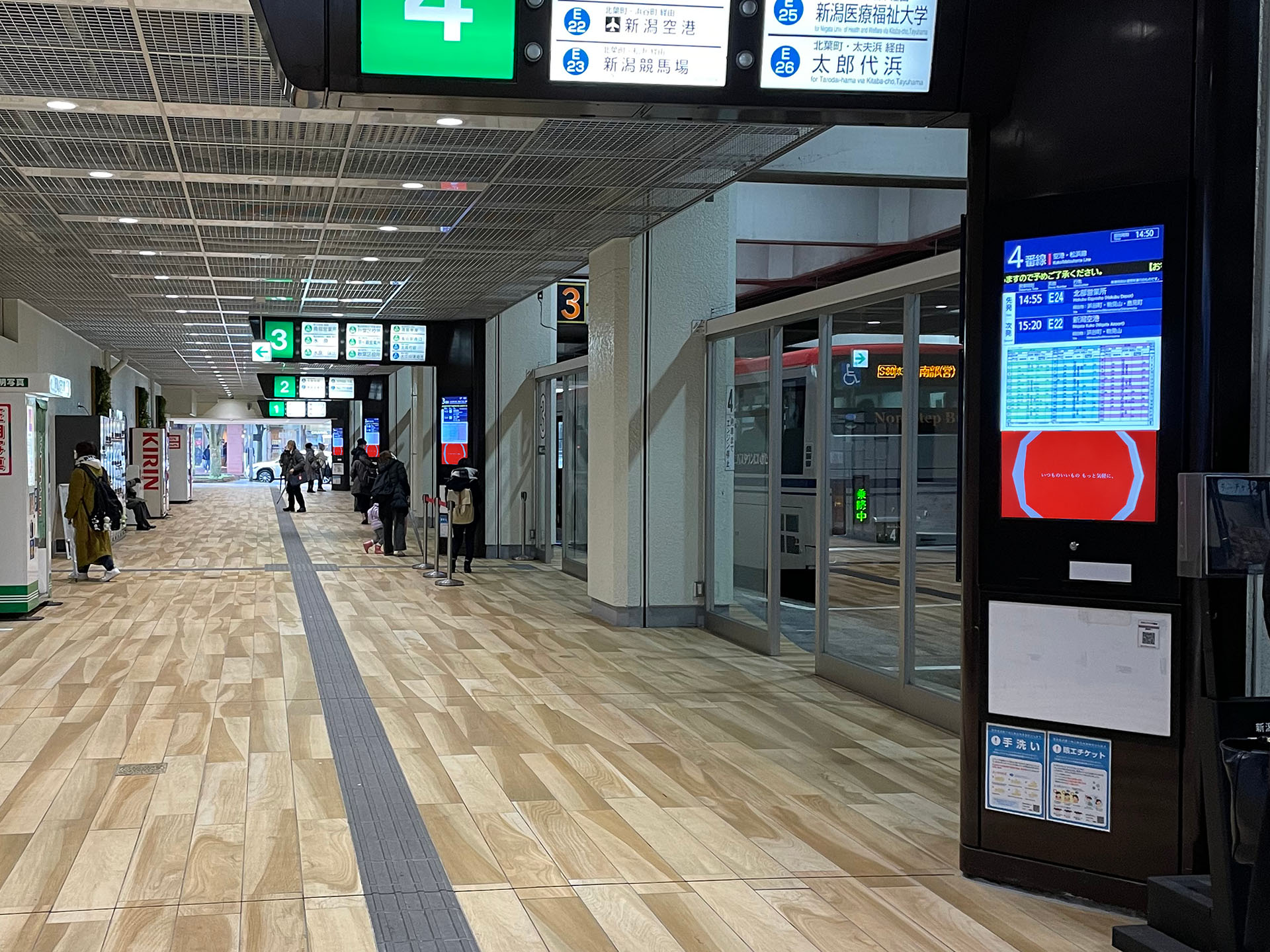
- Let us know what you think of CMP.
In Niigata, there are many sudden service cancellations due to snow, etc., and it was very difficult to change the paper notices. Now we can distribute operation information anytime, anywhere, which is very helpful in our business.
As for the other axis, advertising, we feel that the commercial value has increased because it is displayed along with the information in an "environment where customers are waiting for the bus" compared to places where they just pass by.
We also feel that the system is highly durable. The temperature in Niigata is so harsh that it exceeds 40℃ in summer and goes down to minus in winter, but the system operates stably and we feel that the quality of the system is high.
- What was the response from users of the bus terminal?
The response from bus terminal users has been positive. The environment for waiting for a bus has been greatly improved, with the next bus displayed in an easy-to-understand manner and the visibility of information improved.
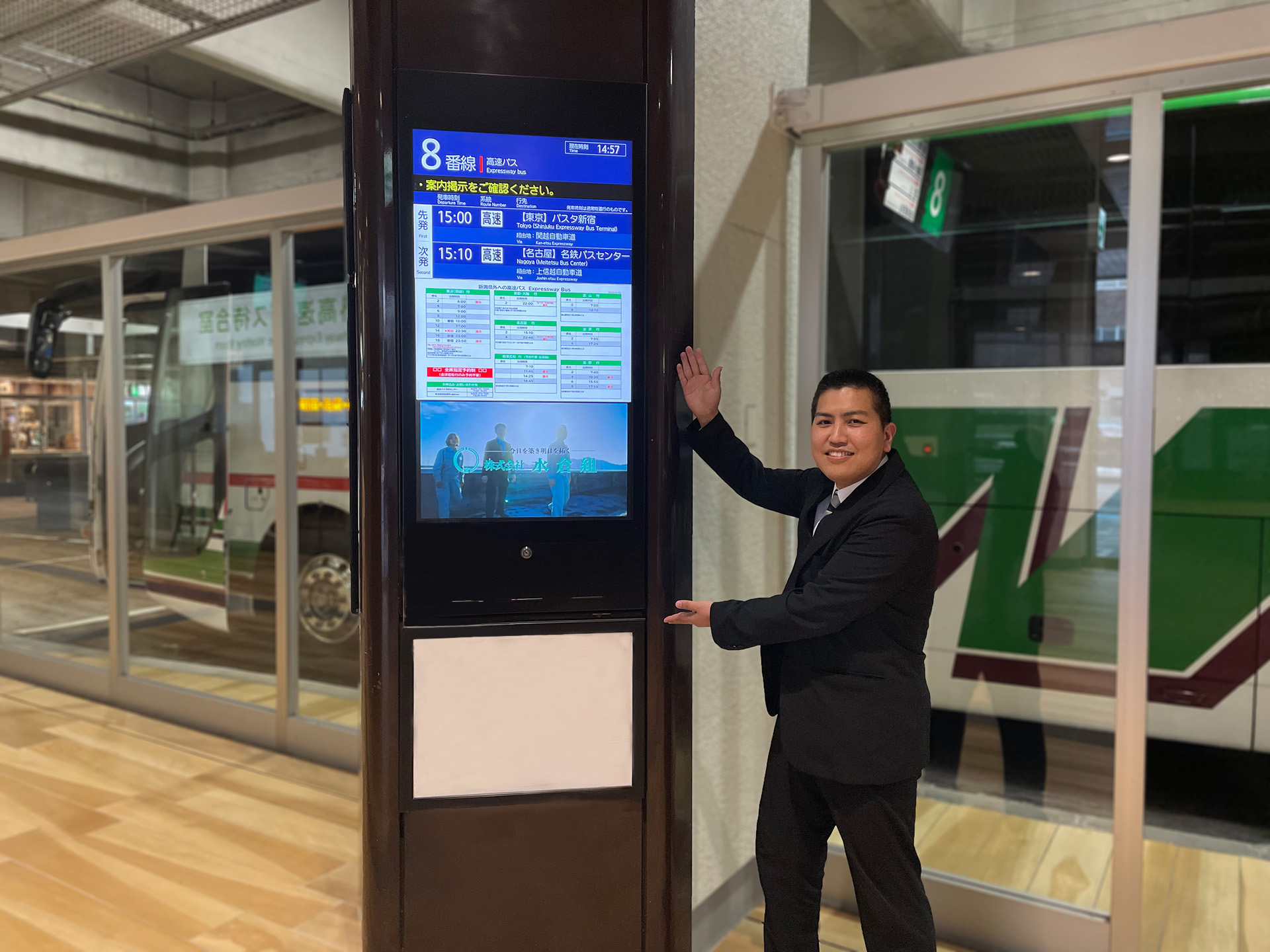
- What do you think about our support response?
Even now, a year and a half after its introduction, the system is still operating stably with no major problems, and even small issues are addressed immediately. The support is also very generous, and when we don't know how to operate the system, you kindly teach us how to use it, which is very helpful.
- Finally, what do you want and expect to achieve with CMP in the future?
We would like to link our systems, such as automatically displaying delay information on signage when we proceed with the introduction of our bus location system. We hope to expand the system to the inside of buses, and hope to be able to use the current scheme for immediate information guidance/advertisement to the buses according to the route.
Also, in addition to being installed at bus stops to provide bus information, we expect to see new development as connected signage, such as using cameras and voice to communicate with customers.
- Thank you very much. We will continue to make every effort to meet your expectations.